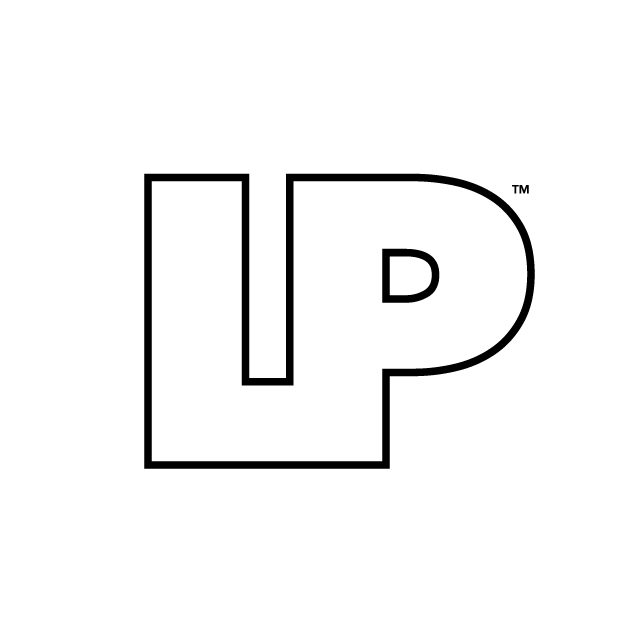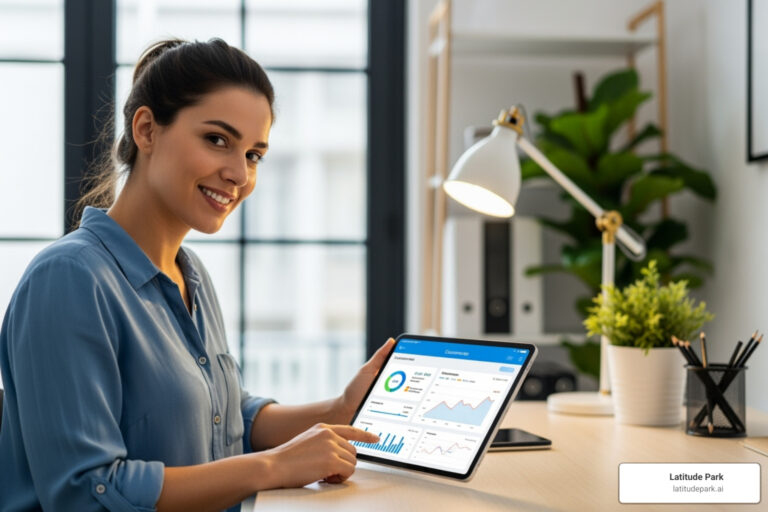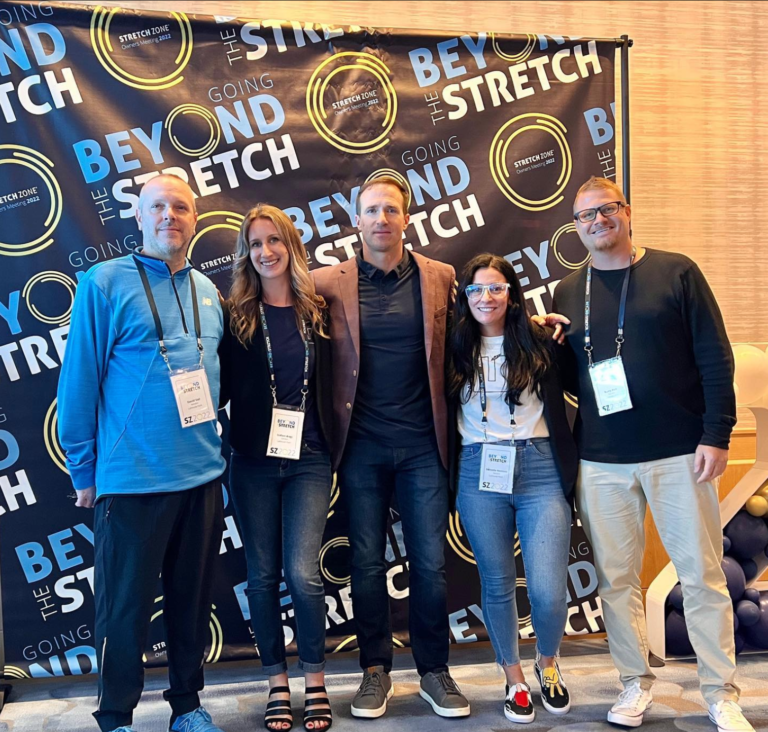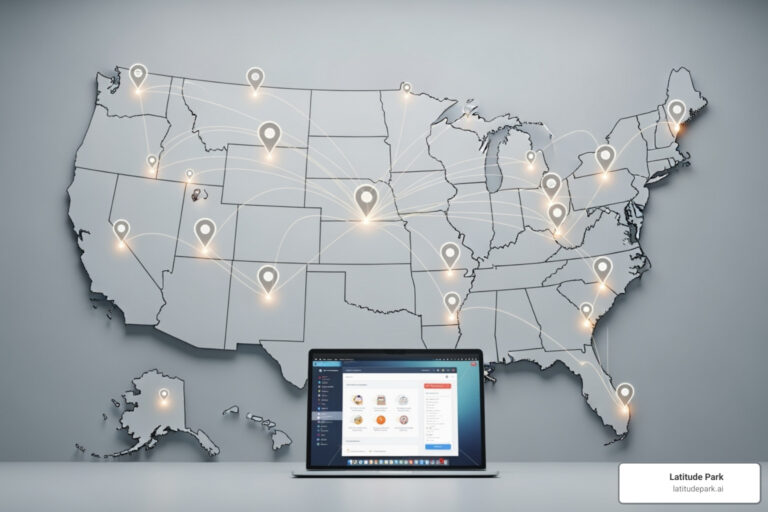Why Smart Advertising is Essential for Business Growth
Effective advertising involves a strategic mix of foundational tactics and paid channels. To succeed, you must start with the basics, like creating a Google Business Profile and optimizing your website, before scaling with paid ads on search and social media. The key is to constantly measure your results and use tools like AI to refine your approach.
The advertising landscape has changed dramatically. Digital marketing isn’t optional anymore—it’s essential for survival and growth. Your customers are searching for businesses like yours online, scrolling through social media, and making purchasing decisions based on what they see.
The good news? You don’t need a Fortune 500 budget. With 84% of adult customers under 30 shopping on mobile devices and businesses making $2 in revenue for every $1 spent on Google Ads, smart advertising delivers measurable results regardless of company size.
This guide breaks down the most effective advertising methods available today—from free tactics to paid strategies. You’ll learn how to create compelling campaigns, measure what matters, and avoid common mistakes.
I’m Rusty Rich, President and founder of Latitude Park, a digital advertising agency in St. Petersburg, Florida. Since 2009, my team and I have helped small businesses and franchises understand how to advertise effectively across search, social, and traditional channels to drive measurable growth.
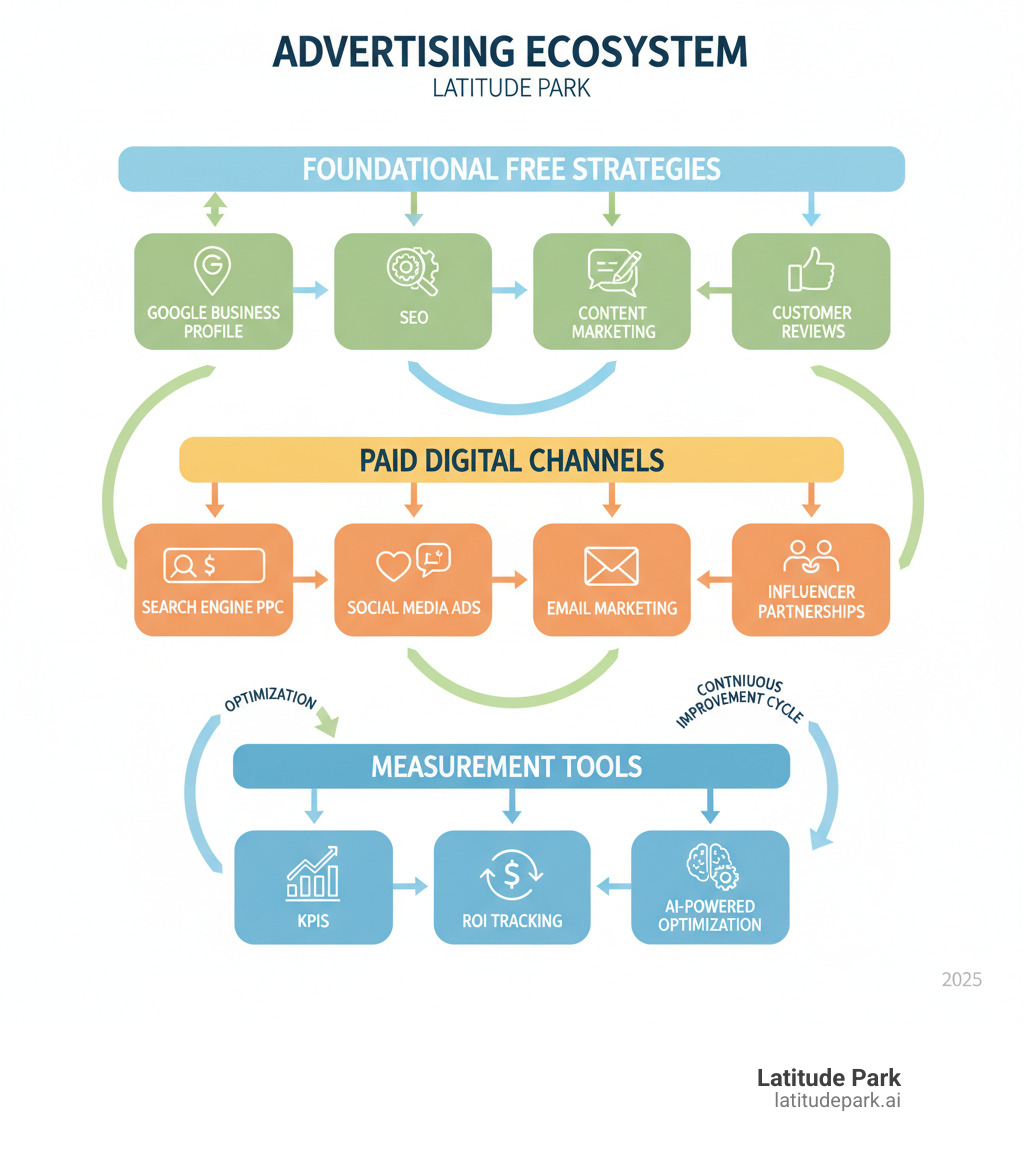
Building Your Foundation: Free and Low-Cost Advertising Strategies
Before you invest in paid campaigns, build a foundation that makes everything else work better. These strategies build credibility and visibility, often without spending a dime.
Establish Your Digital Footprint with Online Business Listings
Your Google Business Profile is arguably the most important piece of free advertising you own. When someone searches for “coffee shop near me,” Google shows business listings with hours, photos, and reviews. This free tool controls how you appear on Google Search and Maps, putting your business on the map—literally.
Setting up your Google Business Profile is quick. Once verified, fill out every field, add photos, post updates, and respond to reviews. A complete profile ranks higher in local searches.
Don’t stop there. Ensure your business also appears on Yelp, Bing Places for Business, Foursquare, and other online directories. Think of these as digital signposts across the internet; the more you have, the easier you are to find.
Most importantly, consistency matters. Your business name, address, and phone number must match exactly everywhere. Even small differences can confuse search engines and hurt your rankings. Claiming and optimizing your listings creates a solid digital foundation that works for you 24/7.

Attract Customers Organically with SEO and Content Marketing
Once your listings are set up, it’s time to focus on Search Engine Optimization (SEO) and content marketing—two cost-effective ways to advertise without paying for every click. Since Google captures over 90% of search traffic, visibility there is essential.
Start with keyword research. Think about what customers type into Google to find you. Tools like Ubersuggest or Google Keyword Planner can help you find popular search terms to include in your website content.
Pay attention to Google’s AI Overviews (AIO), the AI-generated summaries at the top of search results. To appear in these AI Overviews, answer common questions clearly on your website.
Your website must also be mobile-friendly, as 84% of adult customers under 30 shop on a mobile device. A mobile-optimized website is mandatory, and page speed is critical. Use Google PageSpeed Insights to find and fix issues.
Content marketing, like blogging, works hand-in-hand with SEO. Creating helpful articles establishes your business as an authority and naturally incorporates keywords. Share your content on social media and in email newsletters to reach potential customers wherever they are.
Harness the Power of Social Proof and Referrals
We trust people more than ads. That’s the power of social proof, one of the most effective ways to advertise.
Customer reviews and testimonials are your digital word-of-mouth. Make them visible on your website, Google Business Profile, and social media. For e-commerce, use product review apps to display photo and video reviews. The key is to ask for them—send a friendly email or text after a purchase.
User-generated content (UGC) is content your customers create featuring your products. It’s incredibly authentic. Asian sauce brand Omsom masters this by showcasing customer-created dishes on its social channels. See this View this post on Instagram for an example.
Referral programs turn satisfied customers into a sales team. Sustainable clothing brand Tentree offers customers a $20 credit for referring new buyers, who also get a discount. It’s a win-win.
Finally, stay active on social media and engage with online communities on LinkedIn, Reddit, and Facebook Groups. This organic engagement builds trust without ad spend.
How to Advertise: A Guide to Paid Digital Channels
Once your foundation is built, amplify your reach with paid advertising. This is where you invest money to accelerate growth and drive measurable results. Think of it as adding fuel to a fire you’ve already started.
How to Advertise on Search Engines with Pay-Per-Click (PPC)
Pay-Per-Click (PPC) advertising on search engines like Google Ads delivers immediate visibility. You bid on keywords, and your ad appears at the top of search results. You only pay when someone clicks.
The beauty of PPC is its precision. You can target by location, time of day, and specific demographics. Google Ads Audiences lets you reach people based on their interests or what they’re actively researching. This is powerful for catching people at the exact moment they need your solution.
On average, businesses make $2 in revenue for every $1 spent on Google Ads. Google offers various campaign types to match your goals:
- Search Ads: Text-based ads in search results, ideal for driving leads.
- Display Ads: Visual banners across websites and apps for brand awareness.
- Shopping Ads: Product listings with images and prices for e-commerce.
- Video Ads: Ads on YouTube and Google’s video network.
- Performance Max: AI-powered campaigns that optimize across all of Google’s channels.
Getting started is straightforward, and Google often provides promotional credits for new advertisers. You can even schedule a meeting with a Google Ads expert for help.
How to Advertise on Social Media Platforms
While search ads capture active intent, social media ads put your business in front of potential customers where they spend their time. With over 3.6 billion users worldwide, these platforms offer incredible reach and targeting based on interests and behaviors.
- Facebook: A powerhouse for small businesses, with nearly 70% of American adults as users. Its extensive targeting options are often more affordable than other platforms. The Facebook Business site offers guidance.
- Instagram: Ideal for visual products and reaching younger demographics. As part of Meta, it uses the same powerful targeting tools as Facebook.
- TikTok: Known for its authentic, DIY-style content that can go viral. Creativity matters more than a big budget here.
- YouTube: The second most popular social network, perfect for sharing expertise or product demonstrations through video.
- LinkedIn: The premium choice for B2B businesses, allowing you to target users by industry, job title, and company size.
When deciding how to advertise on social media, choose the platform where your customers are most active.
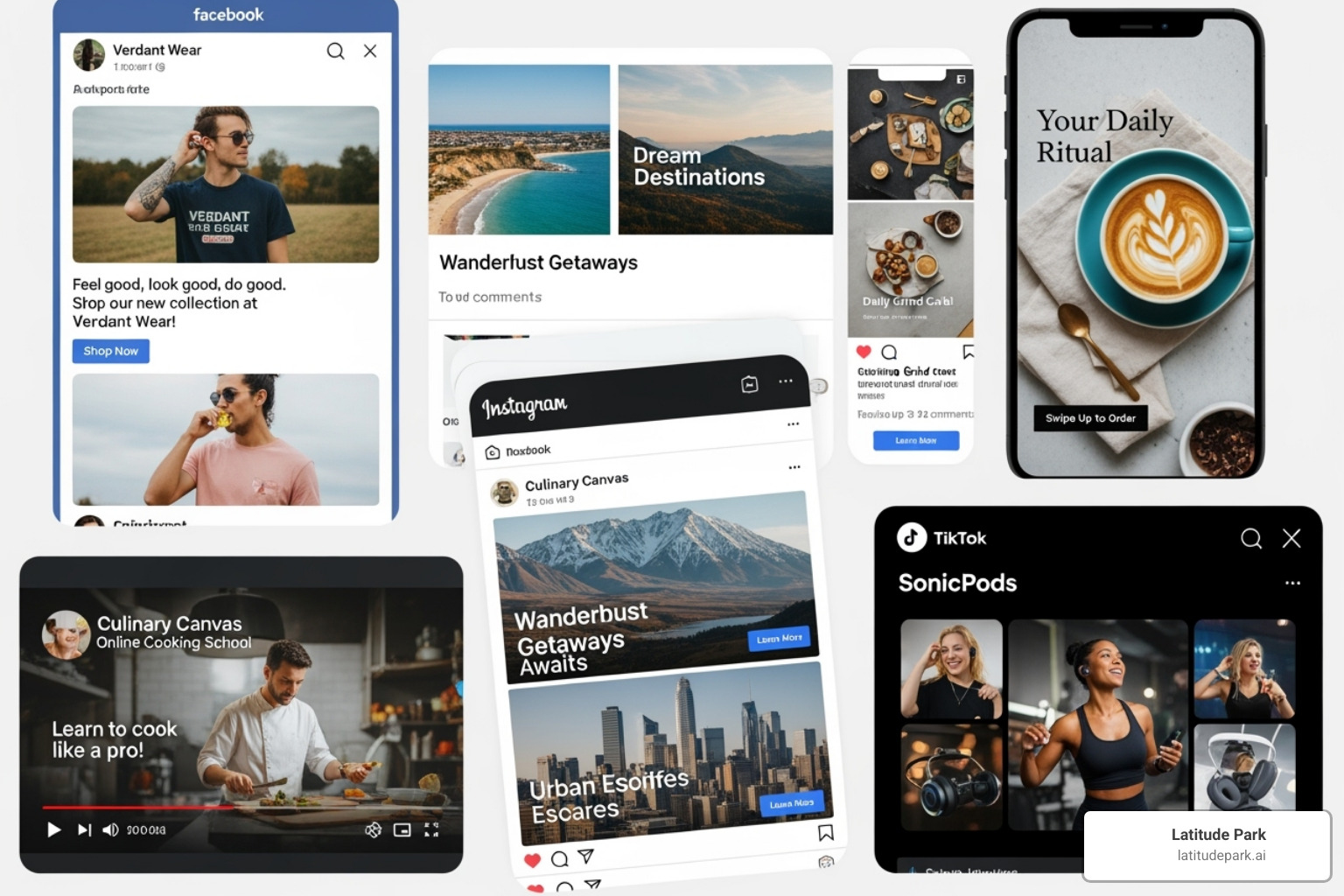
Expanding Your Reach with Email and Influencer Marketing
Beyond search and social, email and influencer marketing deliver excellent returns by leveraging trust.
Email marketing offers an average return of $36 for every dollar spent. It’s a direct, personal channel. The key is building a quality list by offering value in exchange for an email address, like a discount or exclusive content. Once you have subscribers, use segmentation and automation to send relevant messages, such as welcome series or abandoned cart reminders.
Influencer marketing has become a major force, with a 2024 Sprout Social study showing 49% of consumers make purchases based on influencer posts monthly. For small businesses, micro-influencers (creators with smaller, highly engaged audiences) are often the most effective. Platforms like Discover Shopify Collabs can help you find partners.
Brand collaborations with complementary businesses also expand your reach. Tinned fish company Fishwife partners with brands like chocolate maker Bixby, creating unique offerings that introduce them to new audiences. See an example of their collaboration post on Instagram.
Executing Your Strategy: From Ad Creation to Performance Tracking
Once you’ve chosen your channels, it’s time to create ads that connect with people, track performance, and refine your approach. This is where strategy meets execution.
Best Practices for Creating Compelling Ad Copy and Visuals
Great advertising answers the question: how do we create something people want to engage with? Start by defining your value proposition. People don’t care about specs; they want to know what problem your product solves. Focus on the benefit, not the feature.
Your headline is often the only thing people read. Make it count by asking a question, sharing a surprising fact, or leading with a clear benefit. Tools like HubSpot’s Free AI Headline Generator can spark ideas.
Simplicity wins. A clean design with one clear focus performs better than a cluttered ad. Every ad also needs a strong call-to-action (CTA) that tells people exactly what to do next, such as “Learn More” or “Shop Now.”
High-quality images or videos are essential for stopping the scroll. You don’t need a massive budget; tools like Canva offer professional templates, and stock sites like Shutterstock, Pixabay, and iStock provide affordable visuals. For video and audio, explore resources like Pond5, Pexels Videos, Videvo, AudioJungle, and Epidemic Sound. You can also hire freelancers for custom work.
Finally, always be testing. Create multiple versions of your ads (A/B testing) to see which headlines, images, or CTAs perform best. This data-driven approach continuously improves your results.
How to Measure Advertising Success and ROI
Knowing how to advertise effectively means measuring your campaign performance. Without measurement, you’re flying blind.
Key metrics include:
- Impressions: How many times your ad was shown.
- Clicks: How many people engaged with your ad.
- Click-Through Rate (CTR): Clicks divided by impressions; shows how compelling your ad is.
- Cost Per Click (CPC): What you pay for each click.
- Conversions: The desired action a user takes (e.g., a purchase or form submission).
- Cost Per Acquisition (CPA): Your ad spend divided by conversions; what you pay for each new customer.
The most important metrics are Return on Investment (ROI) and Return on Ad Spend (ROAS), which measure the profit and revenue generated from your ads. Most ad platforms have built-in analytics dashboards. For a comprehensive view, consider using Ad Management Software to consolidate your data. Monitor performance regularly to pause underperforming ads and double down on what works.
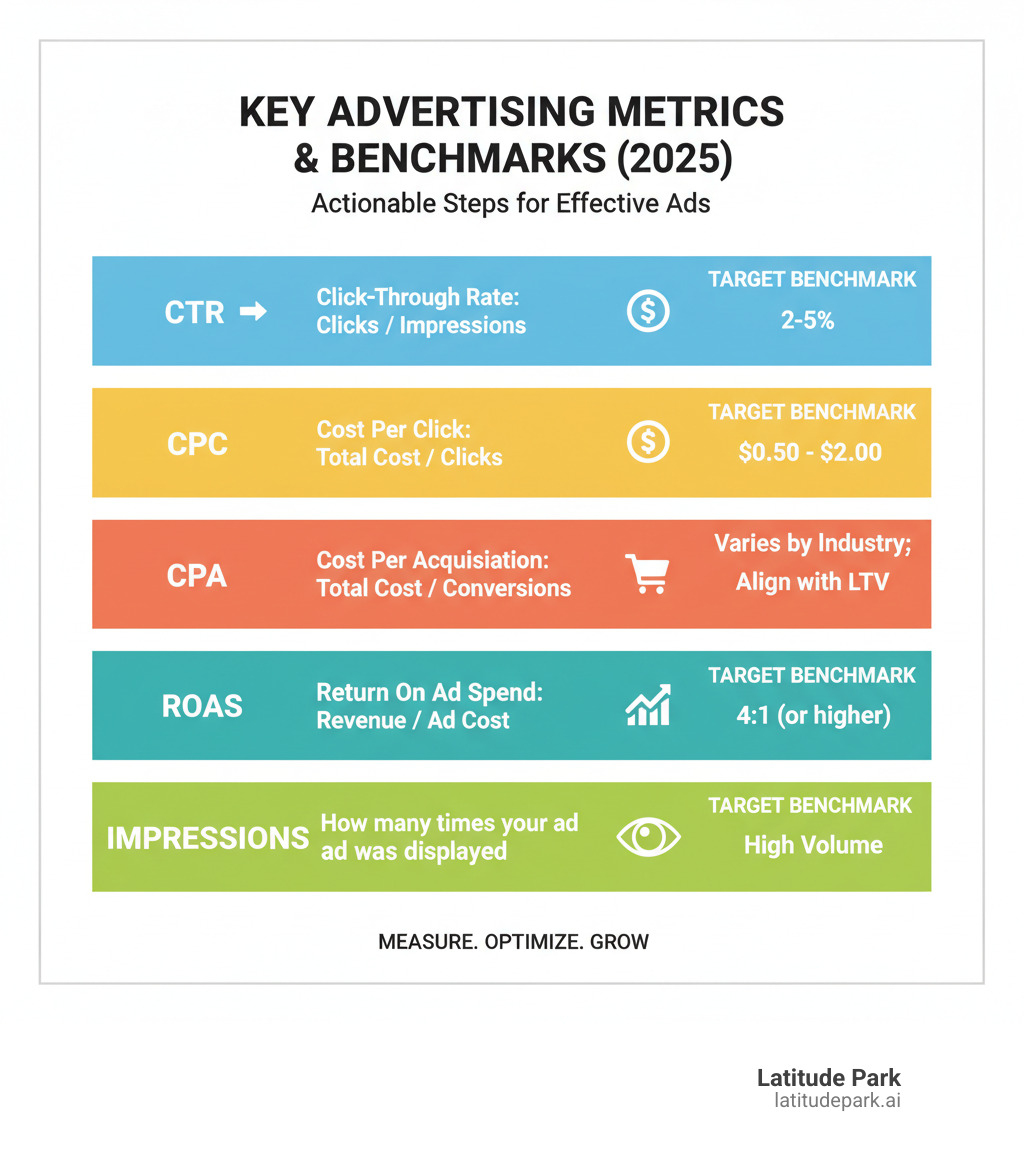
Integrating AI into Your Advertising for Better Results
Artificial Intelligence (AI) is no longer optional in advertising; it’s essential. AI excels at automated bidding, analyzing vast amounts of data in real-time to optimize ad placements and budgets. Google’s AI-powered ad solutions help businesses find new customers and improve results with less manual effort.
AI also enables advanced audience targeting by identifying subtle patterns in user behavior to create highly precise custom audiences. With dynamic creative optimization, AI can test thousands of ad variations to find the best combinations for different segments.
Perhaps most powerfully, AI enables personalization at scale. Research from McKinsey shows that personalization can boost revenues by 5 to 15%. For small businesses, AI levels the playing field by making powerful tools and insights accessible to everyone.
Frequently Asked Questions About Small Business Advertising
You’ve learned the strategies and channels. Now let’s tackle the questions we hear most often from business owners.
What are the most cost-effective advertising strategies for a new business?
When you’re starting out, focus on strategies that cost little to nothing but deliver significant value:
- Google Business Profile: This free listing is your top priority. It puts you on Google Maps and in local search results, driving calls and foot traffic.
- SEO and Content Marketing: Optimizing your website and creating helpful blog posts attracts organic traffic over the long term.
- Organic Social Media: Consistent posting and genuine engagement on the right platforms build community and trust without any ad spend.
- Email Marketing: With an average return of $36 for every $1 spent, building an email list is one of the smartest investments you can make.
- Customer Reviews and Referrals: Encourage happy customers to leave reviews and refer friends. Word-of-mouth is powerful and free.
- Online Directories: Listing your business on sites like Yelp and Bing Places for Business increases your online visibility.
How do I choose the right advertising channels for my goals and budget?
Choosing where to spend your budget is about being in the right places, not everywhere.
First, define your goals. Are you building brand awareness, generating leads, or driving sales? Different channels excel at different objectives. Google Ads is great for capturing immediate demand, while social media is better for introducing your brand to new audiences.
Next, understand your audience. Where do they spend their time online? Target professionals on LinkedIn; reach younger demographics on Instagram and TikTok.
Start small with your budget. Pick one or two channels that align with your goals and audience, run focused campaigns, and track everything. Watch your ROI and cost per acquisition, then double down on what works and cut what doesn’t. Digital advertising allows you to adjust in real-time based on data, not guesswork.
What are some common advertising mistakes to avoid?
Knowing what to avoid can save you time and money. Here are common pitfalls:
- Poor Audience Targeting: Digital platforms offer precise targeting—use it. Define your ideal customer and narrow your audience accordingly.
- Vague Messaging: Your ad must communicate value quickly and have a clear call-to-action (CTA). Tell people exactly what to do next.
- Not Tracking Results: If you don’t measure performance, you’re guessing. Set up conversion tracking from day one and review your analytics.
- Inconsistent Branding: Your brand’s voice and visual style should be consistent across all channels to build trust.
- Ignoring Mobile Users: Most of your audience is on their phones. Ensure your ads and landing pages are mobile-friendly, or you’ll lose sales.
- Spreading Yourself Too Thin: It’s better to excel on two platforms than be mediocre on five. Focus your budget where you see the best returns.
- Overly Complex Design: Keep your visuals clean and your message simple. Clutter confuses, while simplicity converts.
Conclusion: Putting Your Advertising Plan into Action
We’ve covered how to advertise in today’s digital world, from foundational free strategies to paid campaigns. You now have a roadmap to reach your customers wherever they are.
Advertising isn’t something you set and forget. It’s a dynamic part of your business that requires creativity and adaptation. Your first campaign won’t be perfect, but what matters is that you start, measure, learn, and refine your approach.
If your budget is tight, focus on free strategies first. Claim your business listings, create valuable content, and build relationships on social media. This foundation makes every future ad dollar work harder.
When you’re ready to scale with paid ads, start with small budgets and test everything. The data will tell you what’s working.
For businesses with multiple locations or franchises, the complexity multiplies. Balancing brand consistency with local relevance requires specialized expertise. This is where a partner who understands the unique challenges of multi-location advertising becomes invaluable.
At Latitude Park, we specialize in helping franchise businesses steer these challenges. We build custom campaign structures on platforms like Meta to address the complex needs of franchises and maximize results.
The advertising landscape will continue to evolve, but the fundamentals remain: know your audience, deliver value, and measure your results. Take what you’ve learned and put it into action. Your future customers are waiting.
